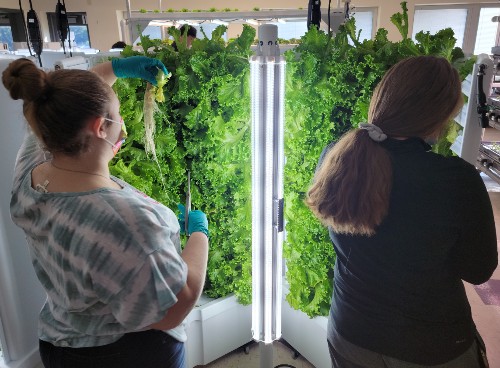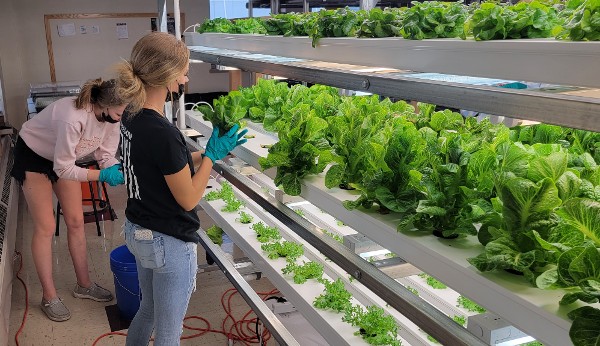 It has been at least two generations since students were involved in production agriculture, yet agricultural educators have continued to find ways to grow students’ understanding of agriculture, food, and natural resources. One way teachers have started introducing production agriculture is by doing so in a classroom setting. Tom Sebranek at Green Bay Southwest has taken this to a new level.
It has been at least two generations since students were involved in production agriculture, yet agricultural educators have continued to find ways to grow students’ understanding of agriculture, food, and natural resources. One way teachers have started introducing production agriculture is by doing so in a classroom setting. Tom Sebranek at Green Bay Southwest has taken this to a new level.
Before the pandemic, Tom had created a “green” room and partnered with Fork Farms and Nicolet Bank, who donated two hydroponic units to the agriculture program. In an effort to expand learning to all students, he was able to add 12 hydroponic units to the room and set a “stretch goal” to produce all the greens for the school’s lunch program. And then … the pandemic hit.
 Undaunted, Tom continued to find ways to grow the program. At the time, he was given the chance to purchase not only an aeroponic system (soil-less with a nutrient-rich mist to the roots), but also a Nutrient Film Technique (NFT) system (soil-less with roots coated in a nutrient solution). Tom collaborated with the manufacturer to adapt the aeroponic system to grow lettuce. The result? Tom and his students were the first in the country to use the system in growing lettuce!
Undaunted, Tom continued to find ways to grow the program. At the time, he was given the chance to purchase not only an aeroponic system (soil-less with a nutrient-rich mist to the roots), but also a Nutrient Film Technique (NFT) system (soil-less with roots coated in a nutrient solution). Tom collaborated with the manufacturer to adapt the aeroponic system to grow lettuce. The result? Tom and his students were the first in the country to use the system in growing lettuce!
The green room has become an outstanding learning opportunity for both students and Mr. Sebranek. Today, it hosts a new course: Urban Ag and Food Science. Almost exclusively, students in the course maintain the green room, under the supervision of Mr. Sebranek. They monitor for signs of nutrient imbalances, measure pH, keep records, harvest the plants, and more.
 And the program has now exceeded Mr. Sebranek’s goal, producing more than the 25-30 pounds of lettuce needed weekly by the Green Bay Southwest lunch program. Recently the Agriculture program provided 41 pounds, with the excess making its way to Green Bay food pantries!
And the program has now exceeded Mr. Sebranek’s goal, producing more than the 25-30 pounds of lettuce needed weekly by the Green Bay Southwest lunch program. Recently the Agriculture program provided 41 pounds, with the excess making its way to Green Bay food pantries!
The Urban Ag and Food Science course has expanded, too, with students managing the school apiary, an aquaponics system, four chickens, a school orchard and vineyard, and greenhouse. Staff line up to purchase eggs from the class and agricultural education students enjoy a fish fry, harvesting fish from the aquaponics system.
Students get hands-on experiences and gain lifelong skills. And because it is a dual credit course, students receive college credit in beekeeping, aquaponics, and aquaculture. Students experience the journey of food from production to processing and eventually eating the fruits of their labor. Great job, Tom Sebranek!
— Submitted by Sally Ladsten, Agriculture, Food, and Natural Resources Consultant, CTE Team, Wisconsin Department of Public Instruction